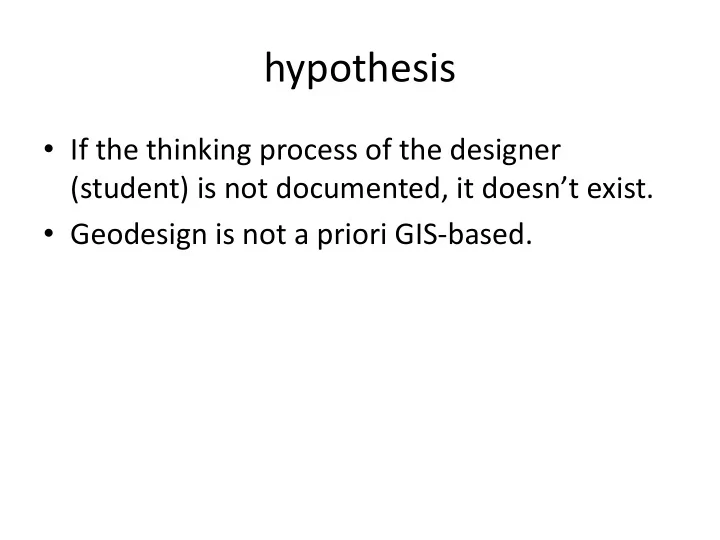

hypothesis • If the thinking process of the designer (student) is not documented, it doesn’t exist. • Geodesign is not a priori GIS-based.
Casestudy Passchendaele • research project ‘from remembrance to vision’: define the most important relic zones testifying the battle of Passchendaele (third battle of Ypres, 1917) • Collaboration between: o Flemish Government Heritage Institute (VIOE) o Community of Zonnebeke-Passchendaele o University College Ghent • The tension between spatial development and protection of the First World War heritage landscape taken as a starting point.
Passchendaele before 1917
Passchendaele after 1917
Visual analysis • Shut in areas • Important views were added. • Image defining, positive or negative elements were added
Spatial entities: ‘ shut-in areas: visual compartments that are relatively isolated from outward sight and can thus be modified without disturbing any regional panoramas’ (Lynch, 1976 p.180).
4 zones
Preparation of the new Community spatial plan: Alternative Futures
• Defining the stakeholder groups: farmers, local government, Flemish government, ecologists, tourism agencies and heritage experts (museum management, War Graves Commission, UNESCO…) . • Starting hypothesis was to double housing and industry and make agriculture more sustainable for the period 2030 • Visitor’s infrastructure is ameliorated for the commemoration of the Battle of Passchendaele in 2017, where a large number of visitors is expected. • Working fields are: economy, agriculture, mobility, heritage, ecological network, sustainability and trends: each field is colour coded. • Designing the different alternatives in a collaborative way, the teachers assisted in the process on an equal basis.
Teaching undergraduate students • Knowledge of GIS has to be built… • However the technique/ principles of geodesign can be taught.
Two ways of thinking • vertical thinking: moving straight ahead with the development of one particular pattern […] In the natural search for alternatives one is looking for the best possible approach • lateral thinking: ‘The very word ‘lateral’ suggests the movement sideways to generate alternative patterns. In the lateral search for alternatives one is trying to produce as many alternatives as possible. One is not looking for the best approach but for as many different approaches as possible (De Bono, 1970 pp.58-59).
Generating alternatives • ‘ The process (of generating alternatives) […] needs to be rooted in what becomes a very systematic process of investigations of options and selection.’ (Lawson& Dorst, 2009 p.199) • ‘Complex situations need to be framed to make them workable. The frames are views on the problem, focussing on selected issues as if through a frame that temporarily blanks out other matters .’ (Schön, 1987)
Landscape engine? Example green structures • 4D-GIS: example planting > visualise and calculate: Need for monitored evolution: spontaneous or planted? Soiltype, humidity ,… > Production of Renewable energy: coppiced planting: Impact on the view (9-12 years) Benefit for the farmer >< loss of agricultural land Positive impact on erosion- sensitivity (water, wind) Eco-network
outcomes • Transparents are used to talk to the people of the place: no threshold • Alternative futures used as a teaching method: documenting the students thinking process, offering them a thinking framework • We realised with our study a new ‘ankerplaats’ that can become a heritage landscape needed for the status of UNESCO- WH
Thank you
Recommend
More recommend